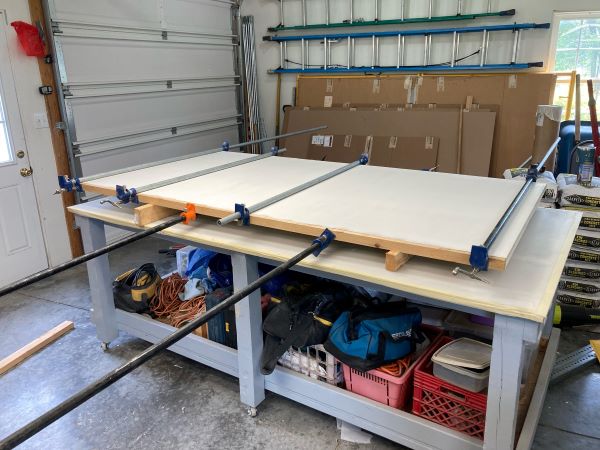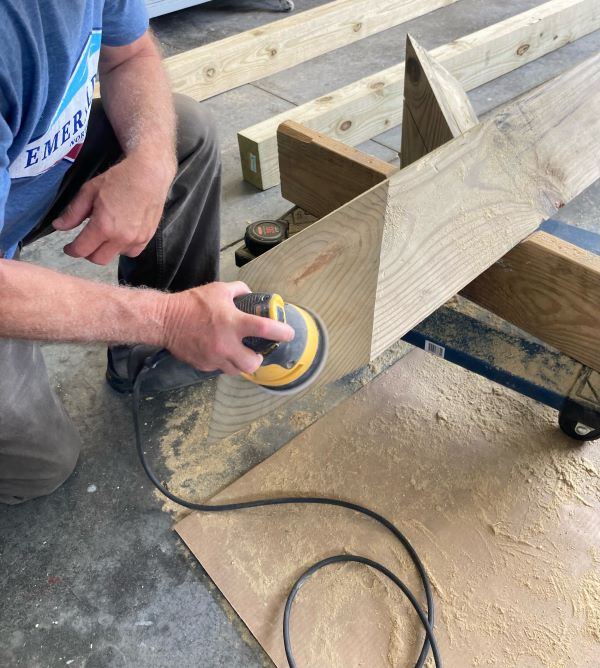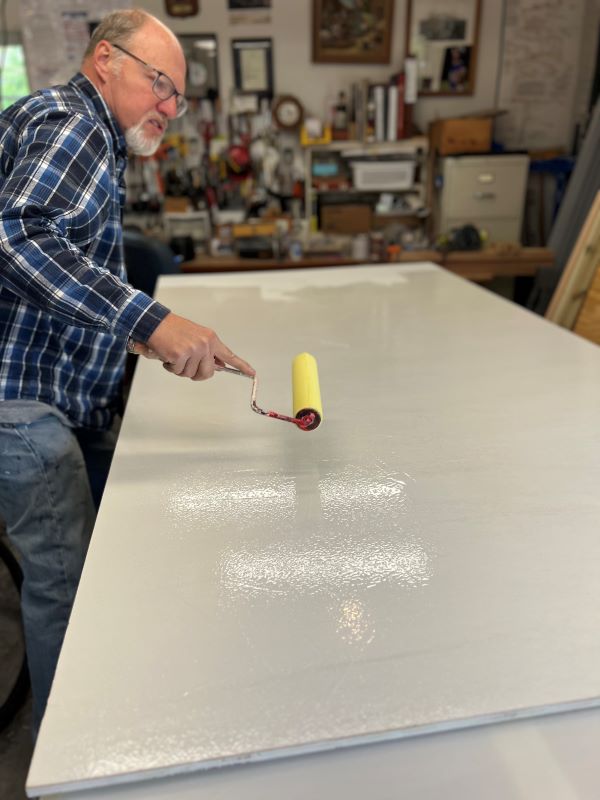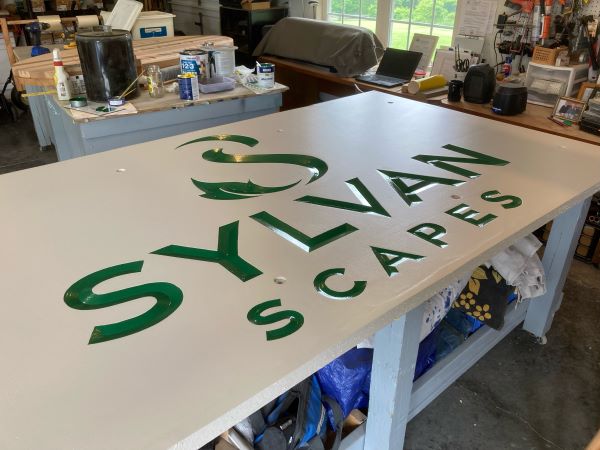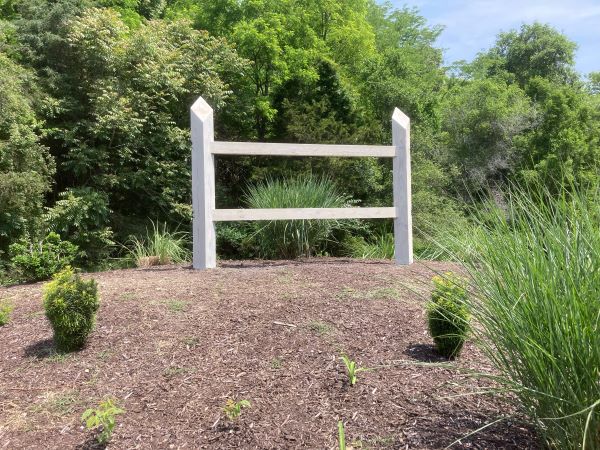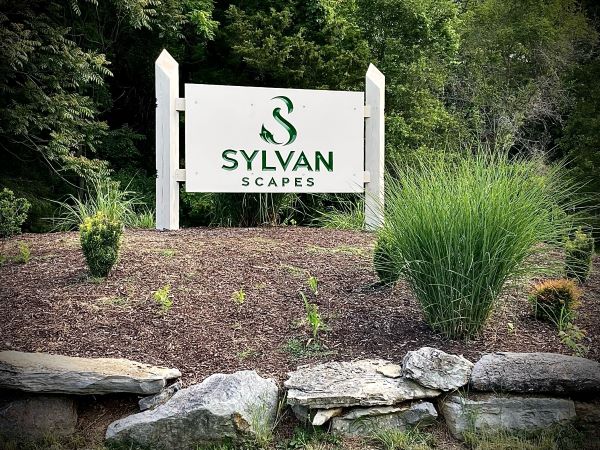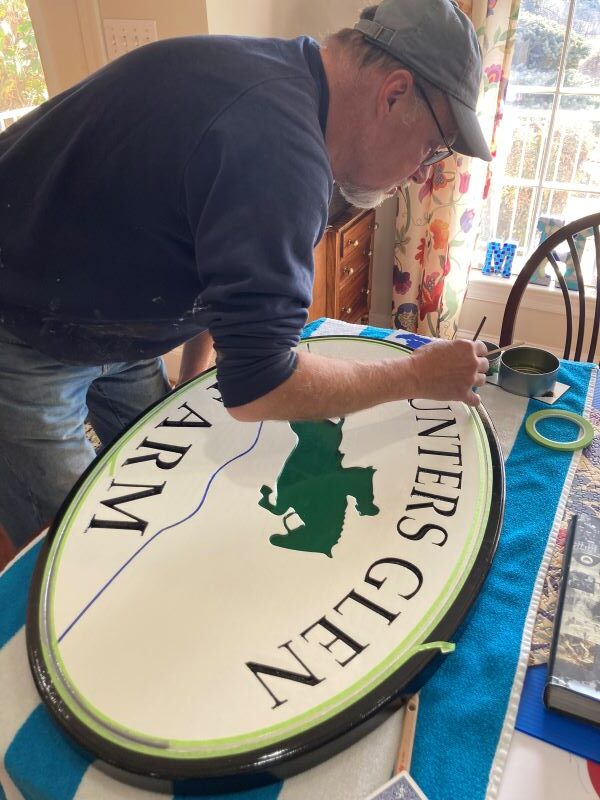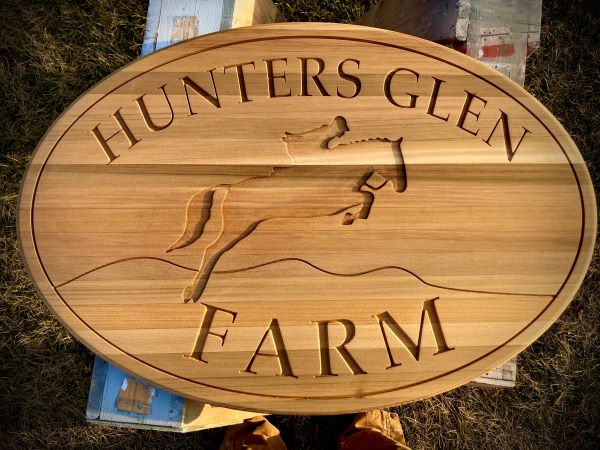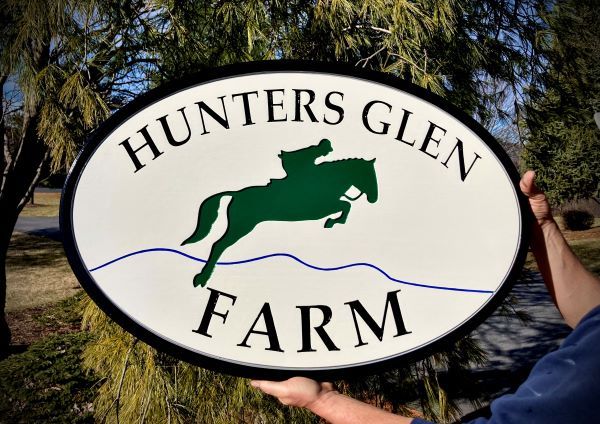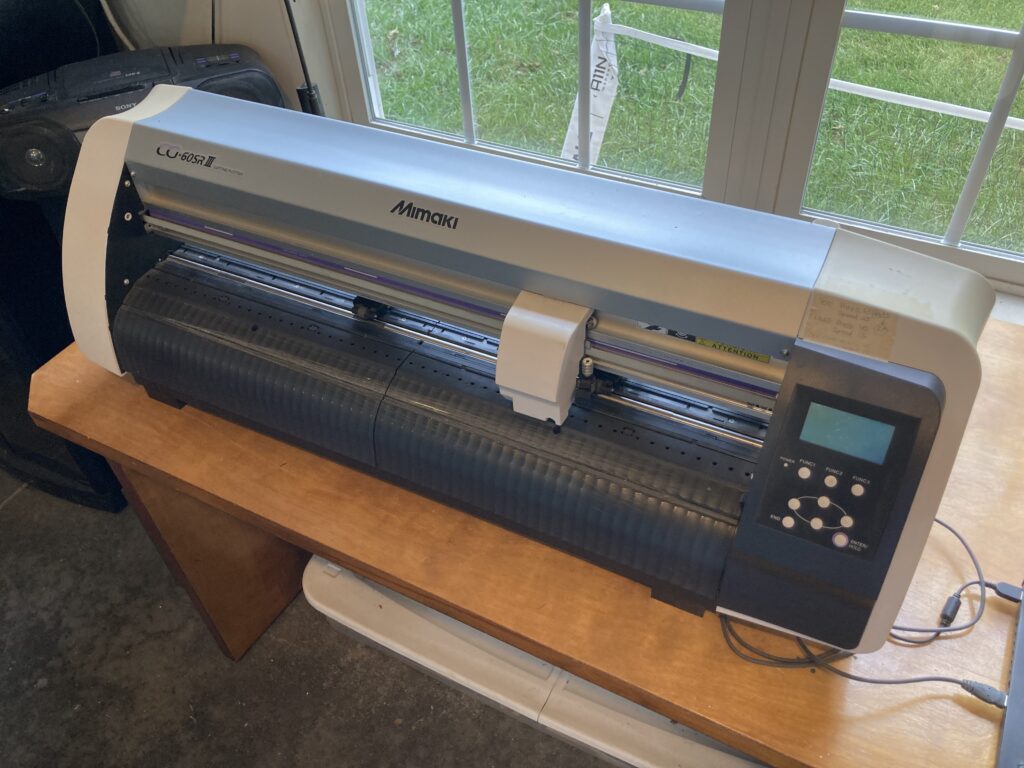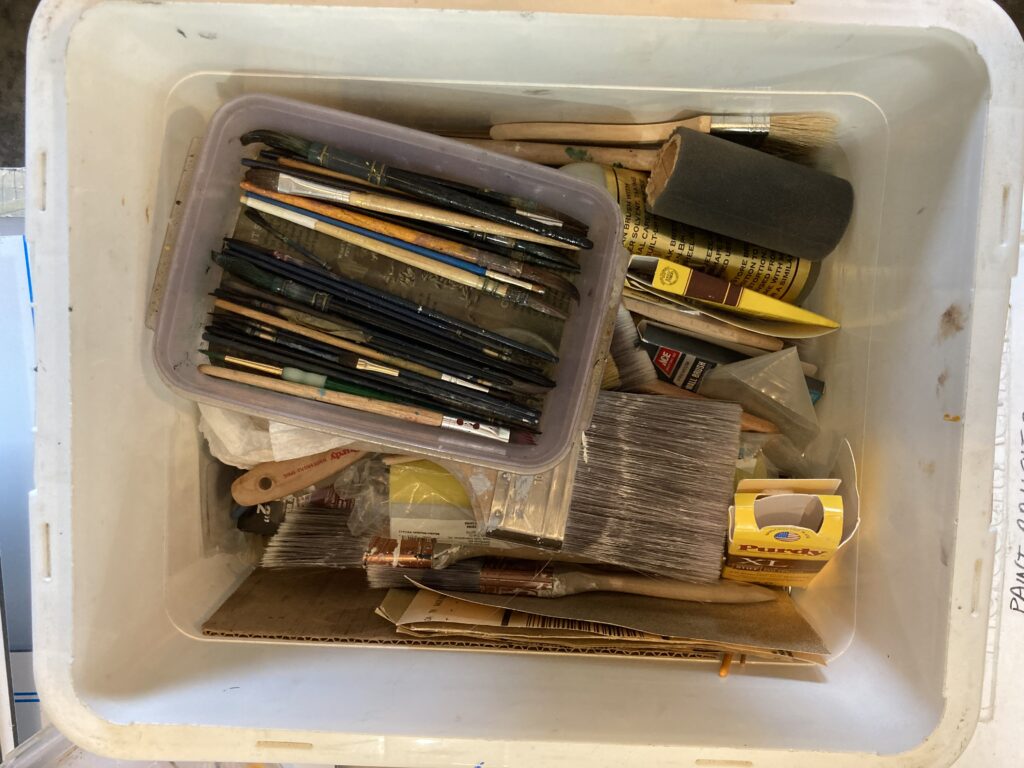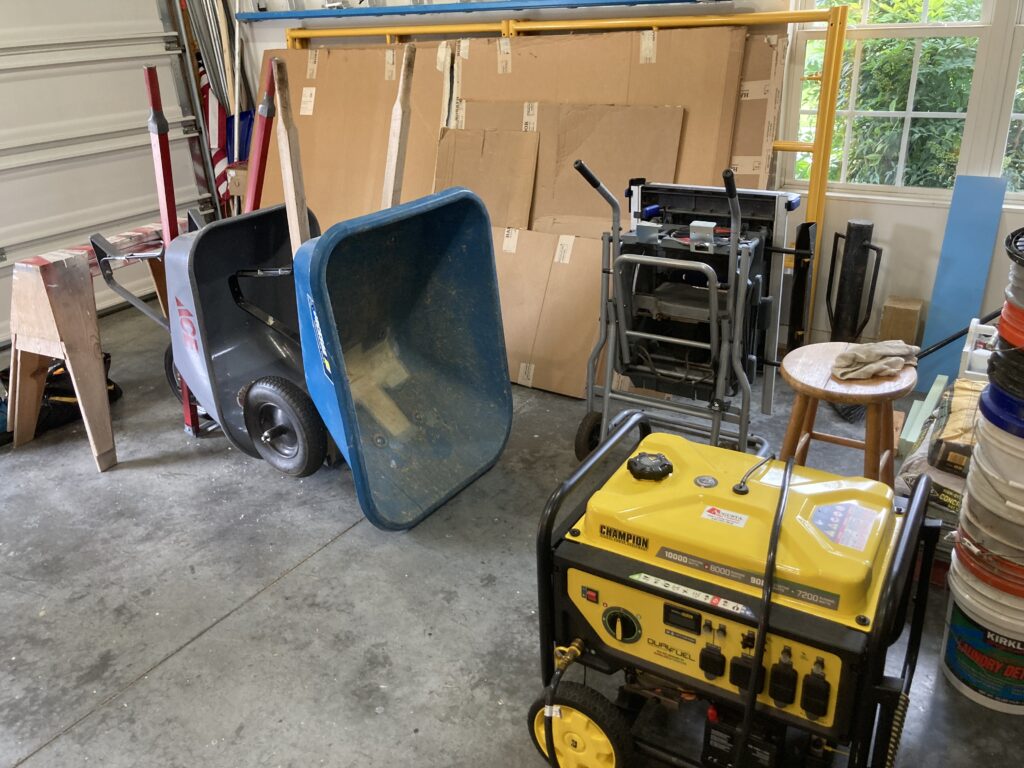HDU OPTION
Carved foamboard for business signage produced better results than I had anticipated. I had not used foamboard for decades becuse I had some issues with the product in its early development, mostly warping problems. This year, after some research on current foamboard technology, I chose Signfoam brand high-density urethane (HDU) for the job, mostly to save some cost for my customer who was looking for a sign within a certain cost budget. I had initially quoted the project in carved cedar, which I am most familiar with, but included a lower-priced HDU option.
PROPERTY MARKETING
The customer wanted to utilize a section of property he owned with frontage on a well-traveled roadway. The land was not useable for much, so he wanted to get some good marketing use from it with a nice new sign. He is a quality landscape contractor and wanted a showpiece…a nice sign in the middle of a large attractive landscaped bed…to remind passersby that he was available whenever they needed a good landscaper!
GOALS ACHIEVED
“Augusta Sign Company was able to turn my vision of a sign into a reality,” said Kevin Thompson, owner of Sylvan Scapes in Staunton, Virginia; “They were able to achieve my expectations and financial goals for the project.” Kevin saved the extra cost of permit secural by obtaining the necessary sign permit on his own. I always recommend that my customers take care of permitting when possible, not only to save them cost, but it also saves me time and I am able to focus more on sign design and manufacturing for my clients.
HOW I DID IT
For this project, I routed a 3/4″ thick HDU board and backed it up with a 3/4″ painted plywood board that was epoxied to the HDU. To make the sign more interesting and eye-catching, I suggested turning the 8X8 treated posts on a 45 degree angle to give them more prominence. I also recommended making an angled top-cut to give it yet more appeal. I was able to closely match the latex satin finish of the HDU background to the semi-transparent stain of the wood posts using help from Burkes Paint and Wallcovering, my local paint supplier. I used PPG Permanizer finish for the background, Ronan Bulleting Enamel for the lettering and PPG ProLuxe SRD Semi-Transparent Wood Finish for the posts.
SUCCESSFUL PROJECT
It was another successful project that I hope will get many heads turning for Kevin as potential customers drive by on Statler Boulevard in Staunton!
Mark Hackley is owner/operator of Augusta Sign Company, 540-943-9818
